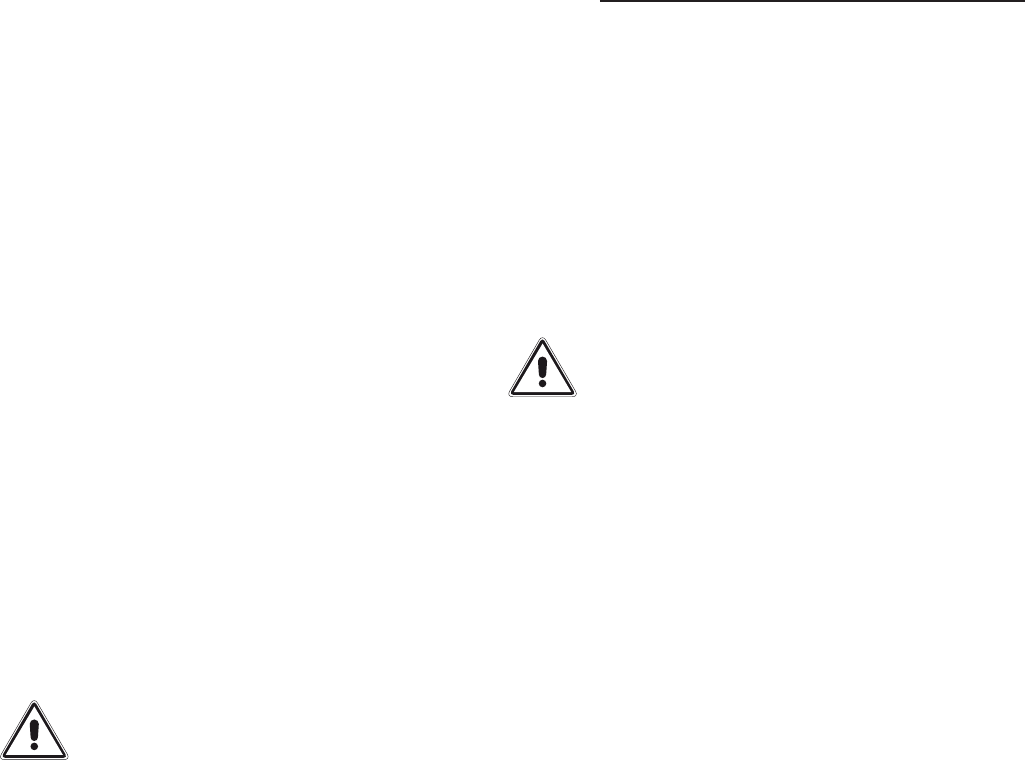
5
5
WARNING!!
ELECTRICAL GROUNDING INSTRUCTIONS
The range must be electrically grounded in accordance with
local codes or, in the absence of local codes, with the Natio-
nal Electrical Code, ANSI/NFPA No. 70-latest edition, in Cana-
da Canadian Electrical Code.
Installation should be made by a Iicensed electrician.
FOR PERSONAL SAFETY, THIS APPLIANCE MUST BE PRO-
PERLY GROUNDED.
If an external electrical source is utilized, the installation must be
electrically grounded in accordance with local codes or, in the
absence of local codes, with the national Electrical Code, ANSI/
NFPA 70.
This appliance is equipped with a four-prong grounding plug
(NEMA 14-50P) for your protection against shock hazard and
should be plugged directly into a properly grounded socket.
Do not under any circumstances cut or remove the fourth
(ground) prong from the power plug.
REPLACEMENT PARTS
Only authorized replacement parts may be used in performing ser-
vice on the range. Replacement parts are available from factory
authorized parts distributors. Contact the nearest parts distributor
in your area.
GENERAL INFORMATION
1. Installation must conform with local codes or, in the absen-
ce of local codes, with the National Fuel Gas Code, ANSI
Z223.1/NFPA 54
- Latest Edition, CAN/CGA-B149.1 or CAN/
CGA-B149.2.
2. Installation in manufactured (mobile) home: installation must
conform with the Manufactured Home Construction and
Safety Standard, Title 24 CFR, Part 3280 [formerly the
Federal Standard for Mobile Home Construction and Sa-
fety, Title 24, HUD (Part 280)] or, when such standard is
not applicable, the Standard for Manufactured Home Instal-
lations, ANSI/NCSBCS A225.1, or with local codes where
applicable.
3. Installation in Recreational Park Trailers: installation must
conform with state or other codes or, in the absence of such
codes, with the Standard for Recreational Park Trailers,
ANSI A119.5.
4. To eliminate risk of burns or fi re by reaching over heated sur-
face units, cabinet storage located above the surface units
should be avoided.
5. Air curtain or other overhead range hoods, which operate by
blowing a downward air fl ow on to a range, shall not be used
in conjunction with gas ranges other than when the hood and
range have been designed, tested and listed by an indepen-
dent test laboratory for use in combination.
6.
WARNING!!
This appliance shall not be used for space heating. This
information is based on safety considerations.
7. AlI openings in the wall behind the appliance and in the fl oor
under the appliance shall be sealed.
8. Keep appliance area clear and free from combustible mate-
rials, gasoline, and other fl ammable vapors.
9. Do not obstruct the fl ow of combustion and ventilation air.
10. Disconnect the electrical supply to the appliance before ser-
vicing.
11. When removing appliance for cleaning and/or service;
A. Shut off gas at main supply.
B. Disconnect AC power supply.
C. Disconnect gas line to the inlet pipe.
D. Carefully remove the range by pulling outward.
CAUTION: Range is heavy; use care in handling.
12.
Electrical Requirement
Electrical installation should comply with national and local
codes.
13.
Air Supply and Ventilation
The installer must refers to local/national codes.
14.
Gas Manifold Pressure
Natural gas - 4.0” W.C.P.
LP/Propane - 11.0” W.C.P.
15. The misuse of oven door (e.g. stepping, sitting, or leaning on
them) can result in potential hazards and/or injuries.
16. When installing or removing the range for service, a rolling lift
jack should be used. Do not push against any of the edges of
the range in an attempt to slide it into or out of the installation.
Pushing or pulling a range (rather than using a lift jack) also
increases the possibility of bending the leg spindles or the
internal coupling connectors.


















